SNVSA92D September 2015 – June 2018 LMZ36002
PRODUCTION DATA.
- 1 Features
- 2 Applications
- 3 Description
- 4 Revision History
- 5 Pin Configuration and Functions
- 6 Specifications
-
7 Detailed Description
- 7.1 Overview
- 7.2 Functional Block Diagram
- 7.3
Feature Description
- 7.3.1 Adjusting the Output Voltage
- 7.3.2 Switching Frequency (RT)
- 7.3.3 Recommended Operating Range
- 7.3.4 Synchronization (CLK)
- 7.3.5 Output Capacitor Selection
- 7.3.6 VERSA-COMP Pin Configurations
- 7.3.7 Input Capacitor Selection
- 7.3.8 Output On/Off Inhibit (INH/UVLO)
- 7.3.9 Under Voltage Lockout (UVLO)
- 7.3.10 Remote Sense
- 7.3.11 VBSEL
- 7.3.12 Soft-Start (SS/TR)
- 7.3.13 Power Good (PWRGD) and Pull-up (PWRGD_PU)
- 7.3.14 Overcurrent Protection
- 7.3.15 Thermal Shutdown
- 7.4 Device Functional Modes
- 8 Application and Implementation
- 9 Power Supply Recommendations
- 10Layout
- 11Device and Documentation Support
- 12Mechanical, Packaging, and Orderable Information
Package Options
Mechanical Data (Package|Pins)
- RVQ|43
Thermal pad, mechanical data (Package|Pins)
Orderable Information
6.8 Typical Characteristics
TA = 25°C, unless otherwise noted.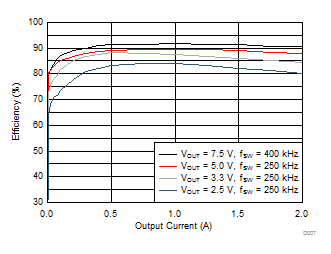
1.
Figure 7. Efficiency vs Output Current | PVIN = 24 V | ||
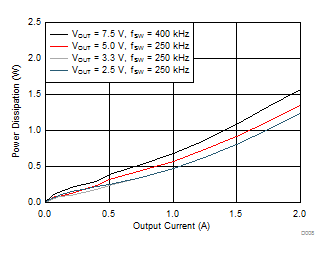
1.
Figure 9. Power Dissipation vs Output Current | PVIN = 24 V | ||
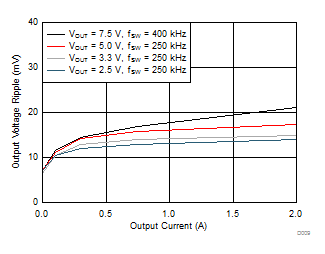
1.
Figure 11. Voltage Ripple vs Output Current | PVIN = 24 V | ||
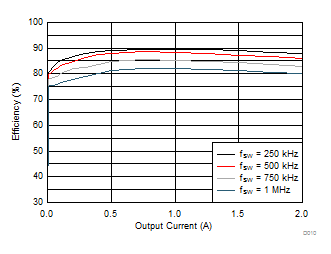
1.
Figure 8. Efficiency vs Output Current | PVIN = 24 V | ||
| VOUT = 5 V | over frequency range |
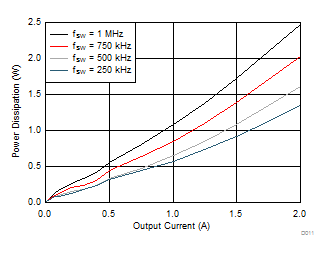
1.
Figure 10. Power Dissipation vs Output Current | PVIN = 24 V | ||
| VOUT = 5 V | over frequency range |
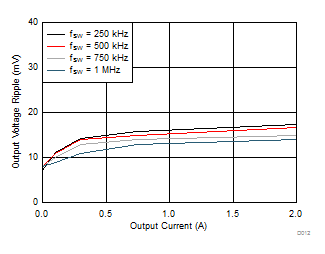
1.
Figure 12. Voltage Ripple vs Output Current | PVIN = 24 V | ||
| VOUT = 5 V | over frequency range |